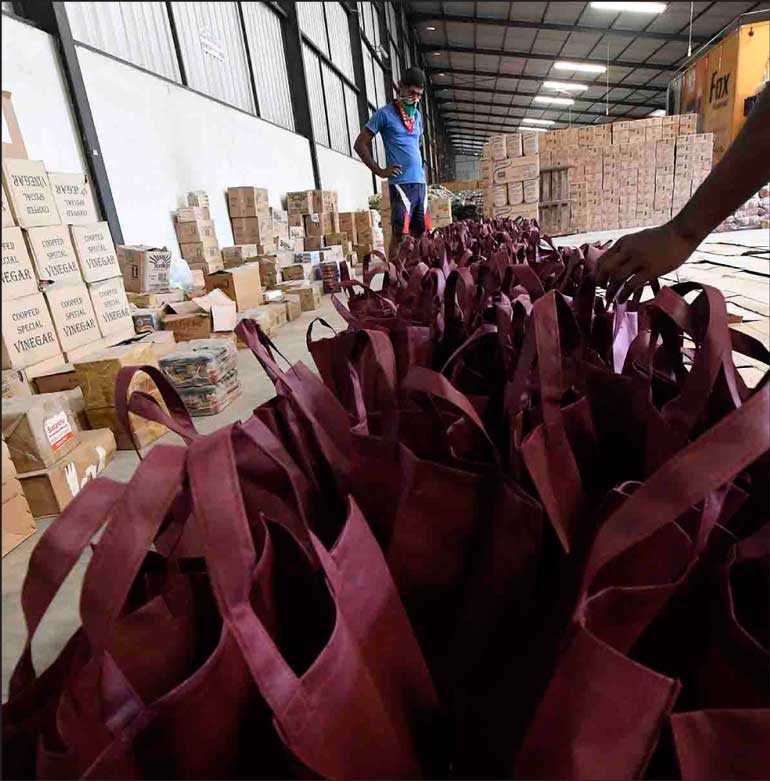Wednesday Feb 05, 2025
Wednesday Feb 05, 2025
Thursday, 9 April 2020 00:00 - - {{hitsCtrl.values.hits}}

Those who have taken an introductory course on micro-economics may recall the story about how people in a city get their food every day.
Without any central coordination, the grains, the vegetables, the fish, the meat, etc. are supplied in  adequate quantity and variety day after day. The city dwellers get to eat; the farmers get rewarded for their work; the many in the middle who facilitate the process also make a living.
adequate quantity and variety day after day. The city dwellers get to eat; the farmers get rewarded for their work; the many in the middle who facilitate the process also make a living.
The story is told to drive home the basic lesson about the market as a decentralised coordinating mechanism: Adam Smith’s “invisible hand”.
The coordinating mechanism attracts attention only when it’s disrupted. Today it has. People have begun to understand how their food reaches their tables only when the most important questions in most households are about how to obtain essentials. But in many cases, they only see the problems with the parts of the supply chain that touch them directly, such as discovery of a seller with the required item, the placing of an order, the fulfilling of that order and the payment.
When these elements do not work, people become frustrated. Some develop workarounds. Suppliers also come up with solutions, because they have to get rid of inventory and earn revenues to cover costs. So over time, problems in the supply chains closest to the customer may get resolved. But it is important to look beyond what is immediately perceptible.
The customer end of e commerce
We have been talking about e commerce for a long time. Seventy per cent of Sri Lankan internet users between 15 and 65 were aware of the possibility of buying remotely using the internet according to LIRNEasia’s After Access survey, but only 43% of that group (1.6 million) had ever bought any good or service. The curfew imposed as a result of the COVID-19 pandemic will, without question, drive up these numbers dramatically.
Even among those who had made purchases, frequency of use was very low. When asked how many purchases they had made in the past three months, 59% answered none and 31% answered 1-5. Only 10% had made more than five purchases within the past three months. Only 23% of those who had made any purchases used platforms for the full range of functions: search, ordering, paying and delivery. Thirty eight per cent had used platforms only for search.
From the perspective of the buyer, the important elements are related to search or discovery functions (who has the item that I want? is the quality adequate? what is the price?) and how payment and delivery could be arranged.
Because credit card use is quite low in Sri Lanka (only 1.79 million cards active in 2019 Q3, with the actual number of users even lower), it is understandable that only 11% of the few who had made purchases had paid using credit cards. Cash on delivery (31%) and debit cards (30%) were more popular.
The curfew created a sudden spike of interest in remote purchasing of goods, especially grocery items. Simultaneously, it shut off the options of using conventional methods of delivery such as picking up the ordered items at the store. Payment options were also affected because customers experienced difficulties in getting cash or were simply lacking funds because their earning opportunities had dried up. The vendors had to deliver the product using carriers with curfew passes.
It may safely be assumed that there is a phone in almost all households in our cities. But other assumptions are dangerous.
Assuming that WhatsApp could be used to transmit prescriptions was wrong. Only 37% of the 15-65 population had smartphones in 2018, according to the LIRNEasia survey. Even though that number should have increased by now, and would have been considerably higher even back then in cities, one still could not assume that a majority of the people who needed medicine has smartphones, used the internet, had downloaded WhatsApp, were capable of transmitting images of prescriptions, etc.
E commerce vendors in Sri Lanka were having a hard time making sales. And these were companies that were dealing with items that do not go bad. The demand that spiked in the past weeks was mostly for goods such as dairy, fruit and vegetables that require care in storage and transportation. Obviously, any system that is designed for a low level of use will experience difficulties when there is a sudden spike in demand. And with perishables for which the greatest demand arose, the systems had to be developed from scratch.
Some supermarkets which had not made any arrangements for e commerce announced telephone numbers to receive orders which were flooded with calls. Lacking the software and agents needed to handle multiple simultaneous calls, those numbers generated frustration instead of orders. Others had low-volume internet-based platforms which also crashed because of high volumes of orders. Both did not have the requisite backends set up. The success of e commerce giants such as Amazon and Alibaba rests also entirely on standardised packaging, computerised (and robotic) retrieval, and the efficiency of their warehouses and logistics.
Simplifying order taking by use of standard bundles or forms is one way that retailers can manage demand in the short term. If they have the prior orders of customers in loyalty databases, it may also possible to simplify order taking and alleviate the frustration of potential customers.
The far end of e commerce
Given the difficulties many potential users have had in understanding the difficulties of scaling up the customer facing side of e commerce it should come as no surprise that there is even greater ignorance about the far end of the supply chains.
For a chicken to be delivered to a customer by a retailer an enormously complex set of transactions over a period of months is required. If any parts of the supply chain break, the repercussions will work their way through the chain and impact the customer immediately or in a few weeks or months.
More will be written about this, but just for a taste, let me make a prediction. There will be shortages and/or price spikes in chicken and eggs in a few months. Disruptions in the supply chain such as difficulties in obtaining feed have caused hatchery operators to sell eggs that were intended for breeding purposes. There may be eggs in the market today, but there will be less chicken and eggs
tomorrow.